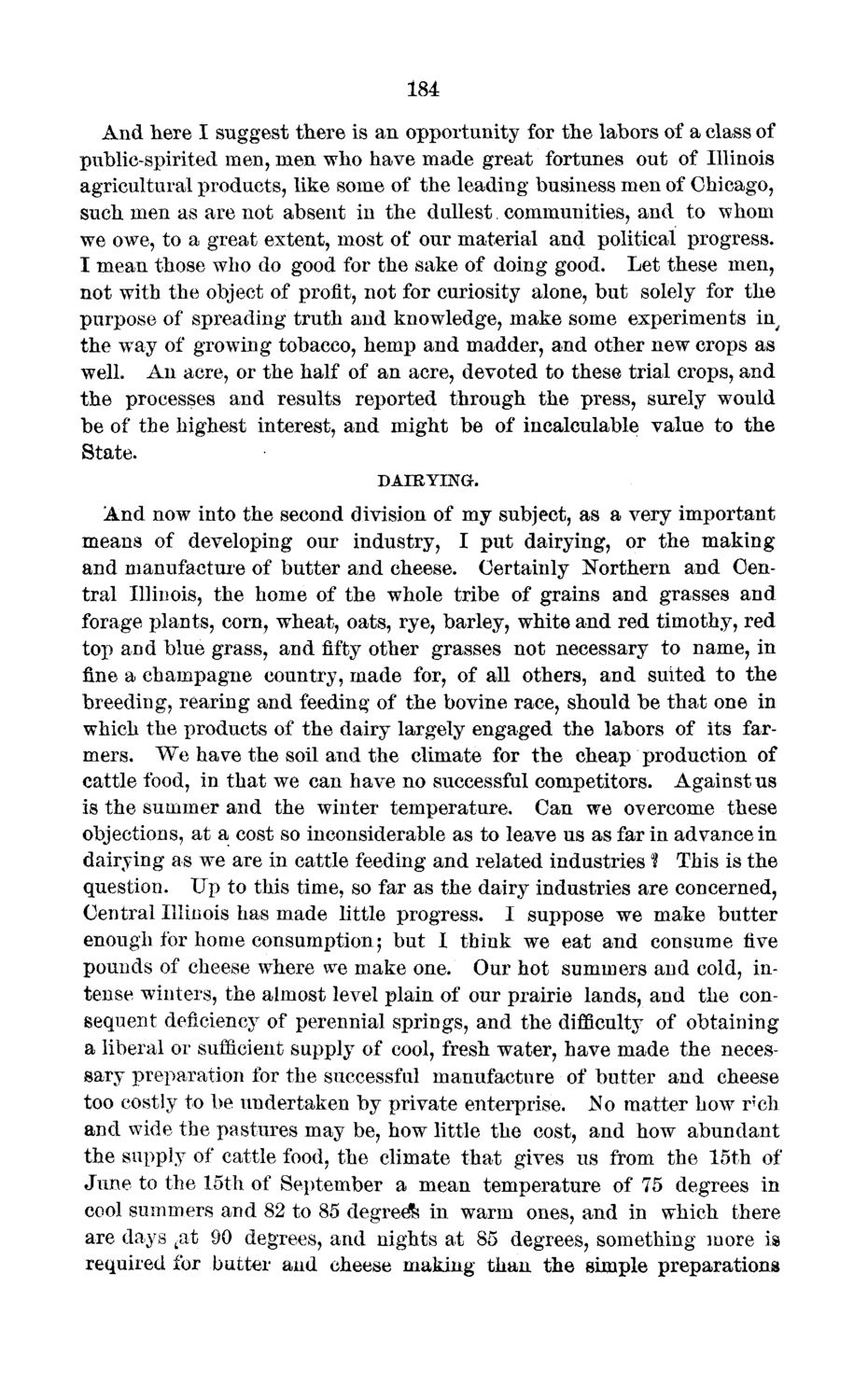| |
| |
Caption: Board of Trustees Minutes - 1873
This is a reduced-resolution page image for fast online browsing.

EXTRACTED TEXT FROM PAGE:
184 And here I suggest there is an opportunity for the labors of a class of public-spirited men, men who have made great fortunes out of Illinois agricultural products, like some of the leading business men of Chicago, such men as are not absent in the dullest communities, and to whom we owe, to a great extent, most of our material and political progress. I mean those who do good for the sake of doing good. Let these men, not with the object of profit, not for curiosity alone, but solely for the purpose of spreading truth and knowledge, make some experiments in^ the way of growing tobacco, hemp and madder, and other new crops as well. An acre, or the half of an acre, devoted to these trial crops, and the processes and results reported through the press, surely would be of the highest interest, and might be of incalculable value to the State. DAIRYING. And now into the second division of my subject, as a very important means of developing our industry, I put dairying, or the making and manufacture of butter and cheese. Certainly Northern and Central Illinois, the home of the whole tribe of grains and grasses and forage plants, corn, wheat, oats, rye, barley, white and red timothy, red top and blue grass, and fifty other grasses not necessary to name, in fine a champagne country, made for, of all others, and suited to the breeding, rearing and feeding of the bovine race, should be that one in which the products of the dairy largely engaged the labors of its farmers. We have the soil and the climate for the cheap production of cattle food, in that we can have no successful competitors. Against us is the summer and the winter temperature. Can we overcome these objections, at a cost so inconsiderable as to leave us as far in advance in dairying as we are in cattle feeding and related industries U This is the question. Up to this time, so far as the dairy industries are concerned, Central Illinois has made little progress. I suppose we make butter enough for home consumption 5 but I think we eat and consume five pounds of cheese where we make one. Our hot summers and cold, intense winters, the almost level plain of our prairie lands, and the consequent deficiency of perennial springs, and the difficulty of obtaining a liberal or sufficient supply of cool, fresh water, have made the necessary preparation for the successful manufacture of butter and cheese too costly to be undertaken by private enterprise. No matter how r'ch and wide the pastures may be, how little the cost, and how abundant the supply of cattle food, the climate that gives us from the 15th of June to the 15th of September a mean temperature of 75 degrees in cool summers and 82 to 85 degree^ in warm ones, and in which there are days t at 90 degrees, and nights at 85 degrees, something more is required for butter and cheese making than the simple preparations
| |